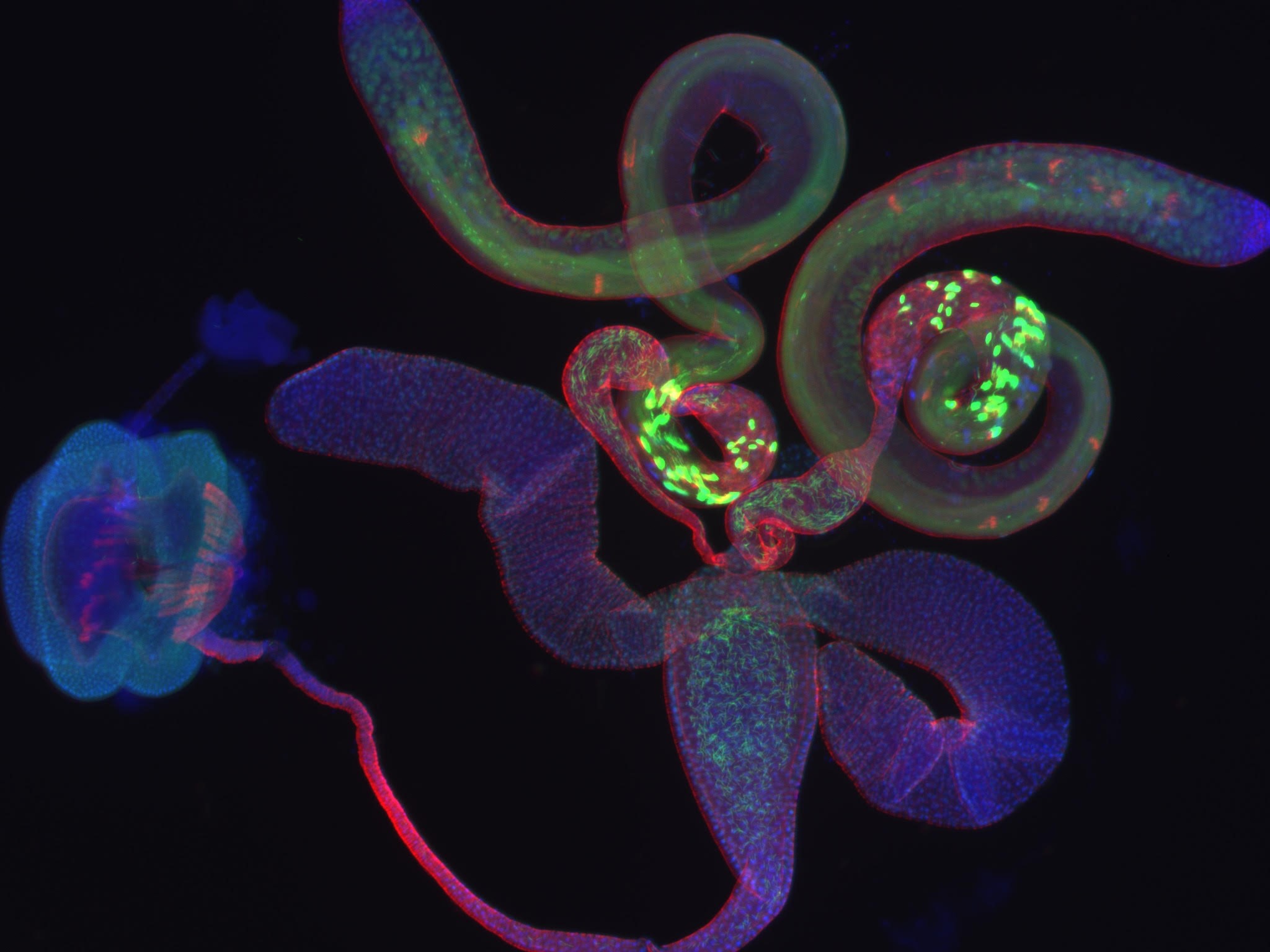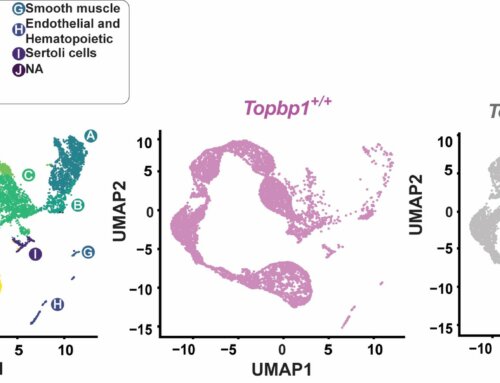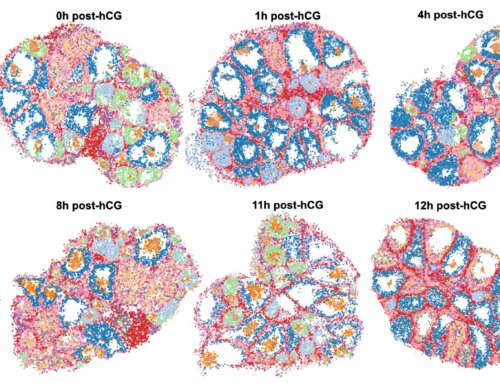
February 2024
Nora Brown, PhD (a postdoc member of the Yamashita Lab at the Whitehead Institute and former PhD at Cornell’s Wolfner Lab) and Mariana Wolfner, PhD (Distinguished Professor of Molecular Biology and Genetics, Stephen H. Weiss Presidential Fellow at Cornell University) published a research article, “The seminal odorant binding protein Obp56g is required for mating plug formation and male fertility in Drosophila melanogaster” in eLife this month.
In the words of Dr. Wolfner, who kindly provided CoRe with a summary for this feature:
“Seminal fluid proteins are male-secreted molecules that are transferred in the ejaculate to females during mating and are important for fertility in animals ranging from insects to mammals. Although many species have common molecular types of seminal proteins, these proteins often show a fascinating evolutionary pattern that of rapid divergence and turnover between species. One groups of seminal proteins are odorant binding proteins (Obps). Obps have long been studied for their roles as members of chemosensory pathways, but why some are in seminal fluid was unclear. We used Drosophila to show that one seminal Obps, Obp56g, plays an important role in forming the mating plug, a post-mating structure that forms in the female’s uterus and helps sperm be stored by the female. Ancestrally, this gene is expressed in chemosensory tissues in the fly’s taste organ, but this gene subsequently gained expression in the male reproductive tract over evolutionary time. This raises the exciting possibility that this gene was co-opted for a reproductive function, and raises questions about whether Obps in different species are performing a similar function.”
The feature photograph for this article, provided by Dr. Wolfner, shows a dissection of a Drosophila male reproductive tract, showing all its organs, and GFP-labelled sperm within the trace, before transfer to the female. Obp56g is made by the ejaculatory bulb (the turquoise butterfly-shaped tissue at 9 o’clock in the figure), which was one of the findings of the paper.





